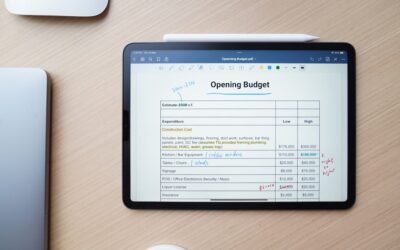Welcome back to our blog series on machine shop estimating methods!
In Part 5, we will focus on cost-based estimating, a method that helps machine shops accurately determine the costs of producing a part or product, ultimately contributing to fair pricing and maintaining profitability. This method is particularly useful when dealing with jobs that require a high degree of customization or involve unique materials and processes.
Let’s dive in!
What is Cost-based Estimating?
Cost-based estimating is an approach that combines the costs of labor, materials, and overhead to calculate the total cost of a job or project. By accounting for all of these elements, this method provides a comprehensive understanding of the various cost components involved in producing a part or product.
How is this different from Time and Materials Estimating?
Time and Materials Estimating focuses on estimating the direct labor time and the cost of materials required to complete a job. It takes into account the actual time spent by workers on a specific task and the cost of raw materials or components used in the manufacturing process. The total cost is calculated by multiplying the labor hours by the hourly labor rate and adding the cost of materials. Time and Materials Estimating is generally considered a simple and straightforward method and is suitable for many projects, particularly when the scope of the job is not very large or complexity is not very high.
Cost-Based Estimating, on the other hand, takes a more comprehensive approach to estimating the costs involved in a project. It considers not only the direct labor and material costs but also other indirect costs associated with the production process, such as overhead expenses (e.g., utilities, rent, administrative costs), equipment depreciation, and other fixed or variable costs. This method seeks to provide a more accurate representation of the total costs involved in a job by taking into account all the cost factors that contribute to the final product. Cost-Based Estimating is typically more accurate and useful for complex or custom jobs, where a more detailed understanding of the costs is necessary for accurate pricing and decision-making.
In short, Cost-based estimating considers a comprehensive range of cost factors, including direct labor, materials, and overhead expenses, whereas time and materials estimating focuses solely on the cost of labor and materials for a project.
How is this different from Machine-Hour Estimating?
The primary difference between these two methods lies in their focus and scope, with machine-hour estimating targeting machinery costs, while cost-based estimating considers a broader range of cost factors. Machine-hour estimating focuses on the cost of operating machinery, calculating the cost based on machine hours required for a project, making it suitable for jobs where machinery plays a significant role. Cost-based estimating, however, takes a comprehensive approach, considering direct labor, material costs, and indirect costs like overhead expenses, making it more accurate for complex or custom jobs.
How to Implement Cost-based Estimating
To implement cost-based estimating in a machine shop, follow these steps:
- Gather detailed and up-to-date cost data for labor, materials, and overhead expenses.
- Determine the labor costs, which include wages, benefits, and any additional employee-related expenses.
- Calculate the material costs, accounting for the type and quantity of materials used, as well as any additional costs such as shipping or handling fees.
- Estimate the overhead costs, which include expenses like rent, utilities, equipment maintenance, and administrative costs.
- Combine the labor, material, and overhead costs to arrive at the total cost of the job or project.
Pros and Cons of Cost-based Estimating
Pros:
- Detailed cost breakdown: Provides a comprehensive understanding of the various cost components, giving machine shops valuable insights for decision-making.
- Customizable: Can be tailored to specific jobs, accounting for unique materials and processes that may not be covered by other estimating methods.
- Incorporates overhead costs: Offers a more accurate reflection of the actual cost of production by considering expenses beyond just labor and materials.
Cons:
- Time-consuming: Requires detailed and up-to-date cost data for accurate results, which can be labor-intensive to gather and maintain.
- Limited by data availability: Can be less effective when dealing with scarce or outdated cost information, potentially leading to inaccurate estimates.
Summary
In Part 5, we’ve explored the advantages and challenges of cost-based estimating. This method offers a comprehensive and customizable approach to determining the costs involved in producing a part or product, making it a valuable tool for machine shops. However, its effectiveness relies on the availability and accuracy of cost data, which can be time-consuming to gather and maintain.
Stay tuned for Part 6, where we’ll discuss another estimating method: CAM cycle-time estimating.




0 Comments